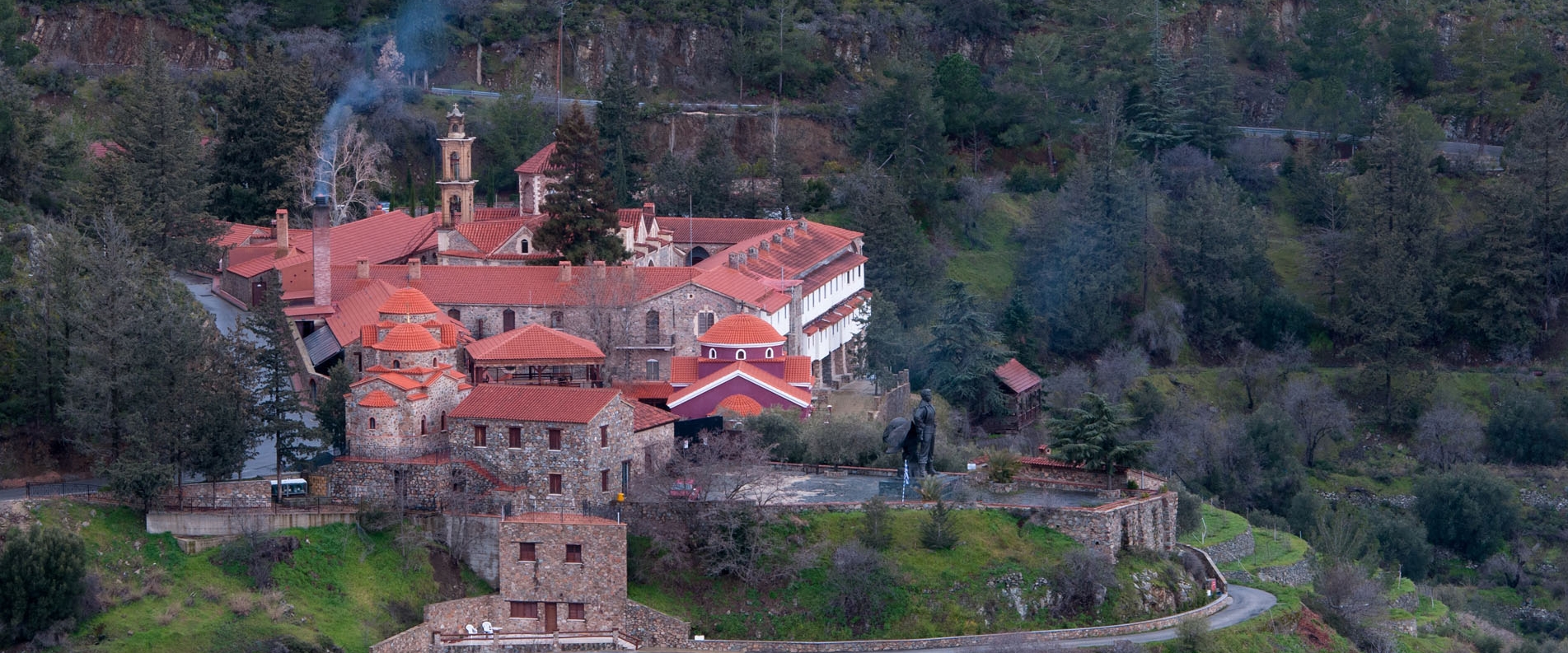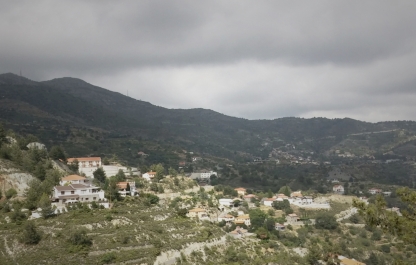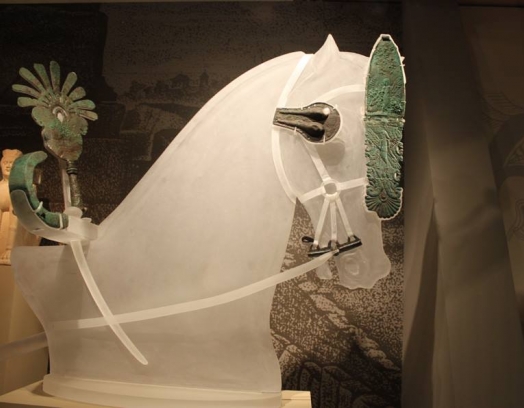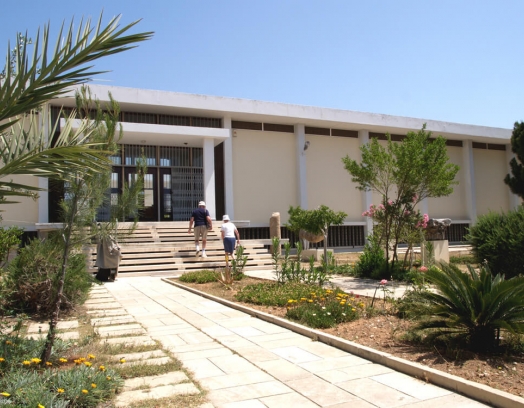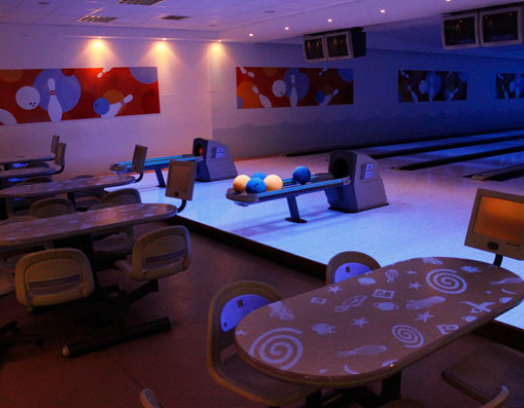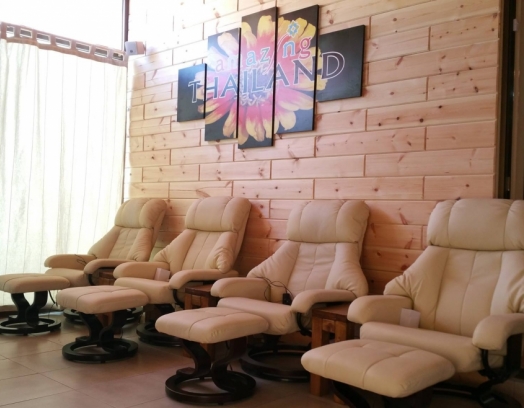The beginning of Christianity in Cyprus is marked by a missionary trip that had been taken by Apostles Barnabas, Mark, and Paul in year 45 BC. Sergius Paulus, the Proconsul of Cyprus at the time, was deeply moved by their preachment. This is how the island became the first Christian Roman province.
The history of the Church of Cyprus has undergone several important stages, the memory of which is alive in beautiful old monasteries and churches of the island. Pilgrims and tourists from all over the world come to Cyprus to visit its holy places.
Saint Neophytos Monastery
Saint Neophytos Monastery has a stavropegic status, which means it is independent from eparchy and reports only to the patriarch. The monastery is located to the west from Paphos 412 meters above the sea level.
In the beginning of the 12th century, Neophytos chose a small natural cave for his secluded cell (the original room in the cave is still open to visitors). Here the monk had stayed alone for 11 long years before, in 1170, his dwelling began transforming into a priory, and later into a monastery, the consuetudinary for which was written by Neophytos himself in 1187. Nevertheless, running a monastery was too much fuss for the old monk, and in 1197 he created a new cell above the old one and started coming down from there to his followers only once a week. After his death, the monks continued expanding the monastery.
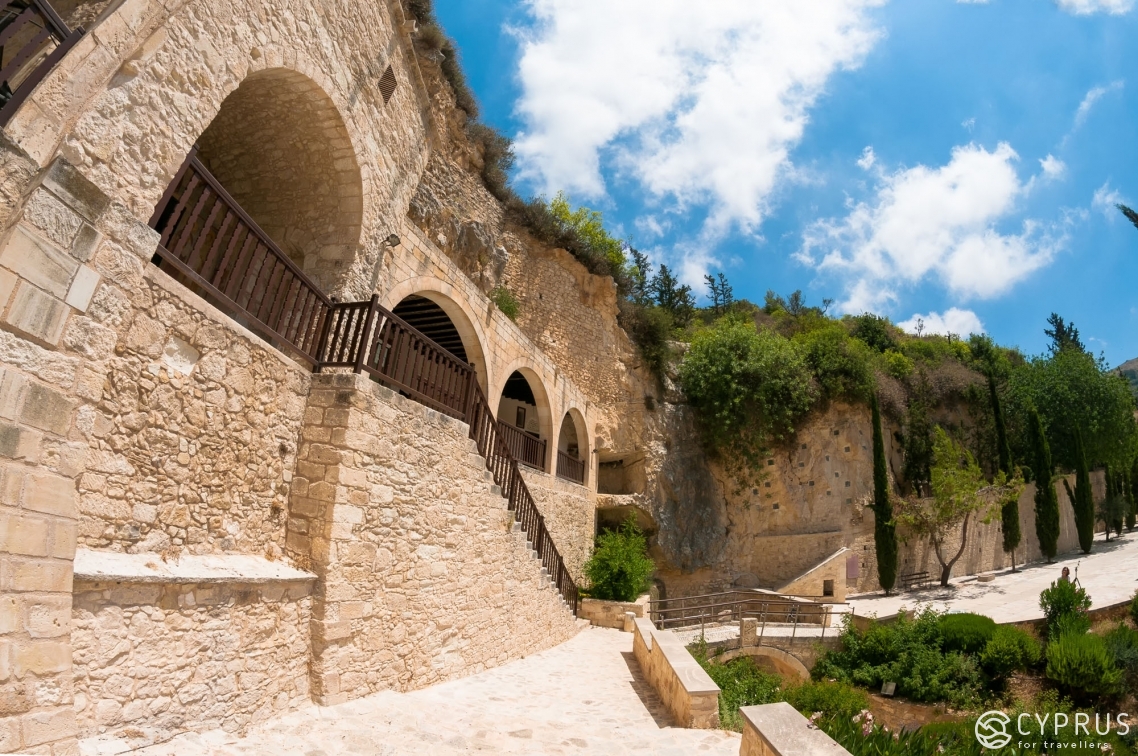
The main church of the monastery was built in the beginning of the 16th century. Today, pilgrims can admire a carved iconostasis and touch St. Neophytos’s relics, that were found on the territory of the monastery in 1756. The original cell is still full of old frescoes that were created in the 12th century.
There is also a museum here, that features Neophytos’ manuscripts, icons from different centuries, antique ceramics, books, and other objects. Guest rooms are located on the same floor.
One can get to Saint Neophytos Monastery by city bus from Paphos. To enter the original cell you will need a ticket, while admission to the monastery itself is free.
Stavrovouni Monastery
Stavrovouni Monastery, one of the oldest in Cyprus, was founded in 327 by Saint Helena, who did a lot to held spread Christian faith on the island. The main holy relic of the monastery is a piece of the Holy Cross. According to an old legend, Saint Helena stopped in Cyprus on her way back to Constantinople from the Holy Land of Jerusalem. In Cyprus, the Holy Cross miraculously flew over the Olympus mountain to a place where a strong light was coming from. The next morning, it was decided to build a monastery there, for which Saint Helena contributed a piece of the Holy Cross and one of the Holy Nails.

In 1426, the monastery was attacked by Egyptians; later on, it was owned by Catholics until the times of the Turkish invasion on the island, when it was almost completely abandoned. From time to time, a hermit would visit, but the monastery remained mostly empty until 1888, when, after a great and destructive fire, the repair works on its territory started for the first time in many years.
Only by the end of the 20th century, the monastery had an aqueduct and electricity. Nowadays, visitors can explore renovated frescoes and the main relic — a piece of the Holy Cross inside a large silver cross.
The monastery produces its own frankincense; there are also icon-painting workshops here.
To get to the monastery, take a highway that runs between Limassol and Nicosia and follow the road signs. Women are unfortunately not allowed in the territory. All the visitors are advised to read the rules of the monastery before visiting.
Chrysoroyiatissa Monastery
Chrysoroyiatissa Monastery can be found up in Troodos Mountains, 700 meters above the sea level. The legend behind its foundation tells about Ignatius, the hermit, who discovered the icon of the Mother of God on the shore of the Mediterranean Sea and decided to build a church in the mountains for it.
The main church and other buildings in the monastery are dated 1760-70.
In the mid-1820, during the War of Greek Independence, some of the rebels were hiding in the monastery. When they were found, the abbot Ioakim was put to an Ottoman jail where he was executed.
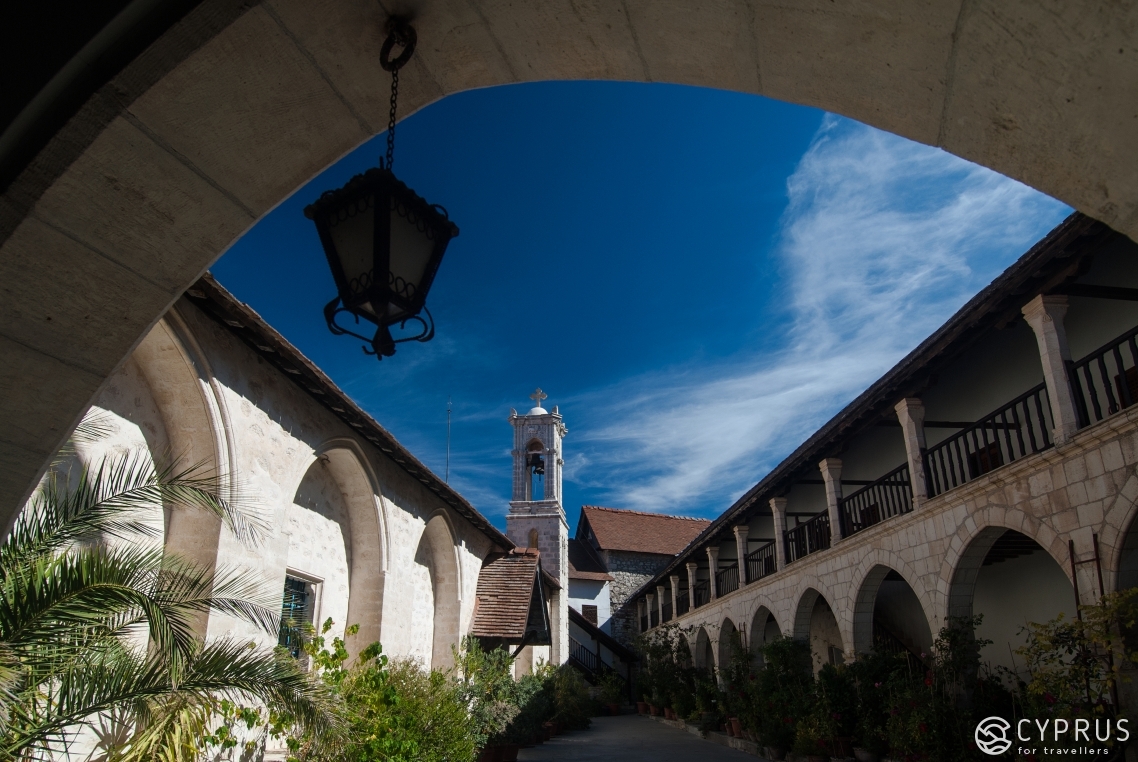
The monastery was damaged by a fire in 1976, but some of the buildings were repaired. Nevertheless, today only the abbot lives in the monastery.
The monastery museum features a huge collection of icons, liturgical devices, the church attire of 17th-20th centuries, manuscripts, Easter eggs, and other objects. Additionally, a private collection of paintings that belongs to the abbot is exhibited here.
In the basement, visitors can see wine-making tools dated the middle of the 17th century. The winery next to the monastery is active today: here you can buy not only local wine but also honey and souvenirs.
Kykkos Monastery
Kykkos Monastery located high in Troodos mountains is one of the most famous religious sites in Cyprus and the most wealthy monastery on the island. The icon of Virgin Mary that had been painted by the Apostle Luke is believed to be thaumaturgic and attracts thousands of pilgrims.
The monastery was founded in the end of the 11th century by the Byzantine Emperor Alexios I Komnenos. Originally wooden buildings did not last long and suffered from numerous fires; in 1541, the monastery was rebuilt in stone. The bell tower was only finished in 1882.
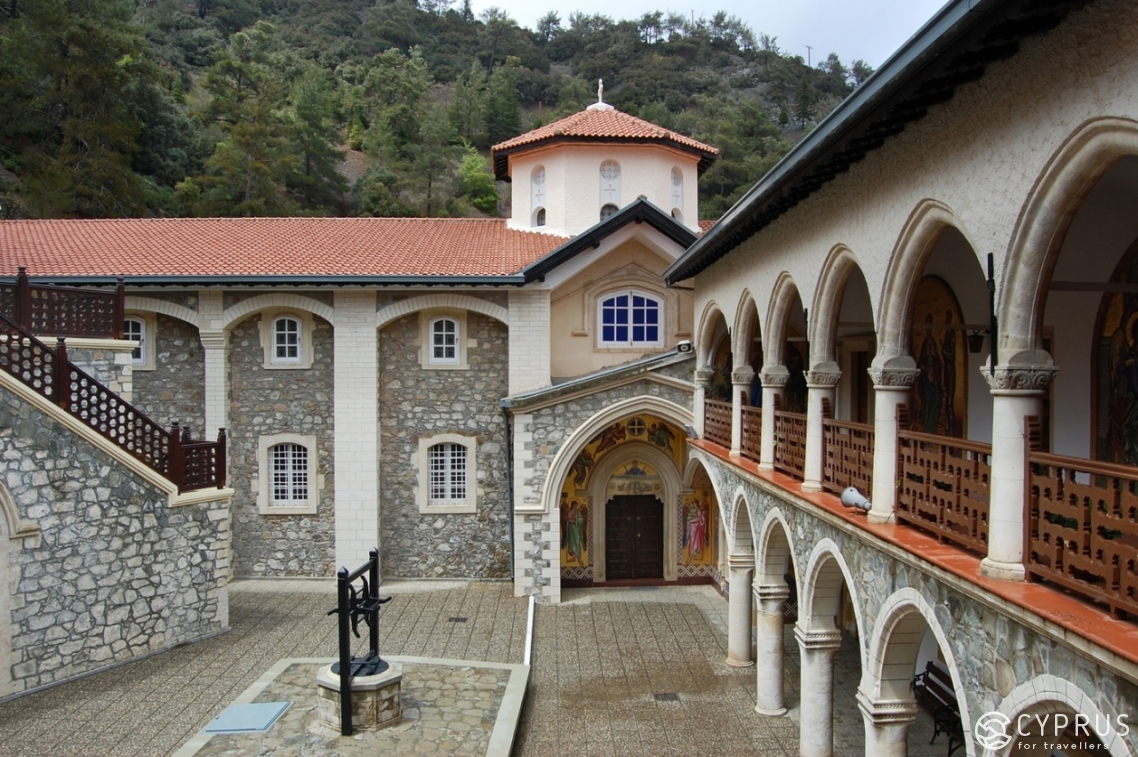
Different monastery buildings belong to various epochs, while most of the mosaics and frescoes were created at the end of the 22nd century by an international team of artists.
Another important date in the history of the monastery is 1926, the year when Archbishop Makarios III, the first president of the independent Cyprus, started his career there as a monk. His tomb is located in a walking distance from the monastery and usually becomes another destination for tourists and pilgrims attending the monastery.
A Centre for Studies was opened on the territory of the monastery in 1986. It includes a library and archives. The monastery museum features different examples of the Christian art: icons, embroidery, the church attire, etc. Here visitors can also listen to the Byzantine music. Admission fee is charged.
Machairas Monastery
Machairas Monastery dedicated to the Virgin Mary is located 50 kilometers from Nicosia. The name of the monastery originates from the Greek word for a knife («Makhaira»): according to the legend, the knife was what hermits Neophytos and Ignatius used in 1145 to approach a holy icon hidden here, in thick bushes.
In the end of the 15th century, James I of Cyprus and his wife Helvis tried to escape from the plague hiding in the monastery.
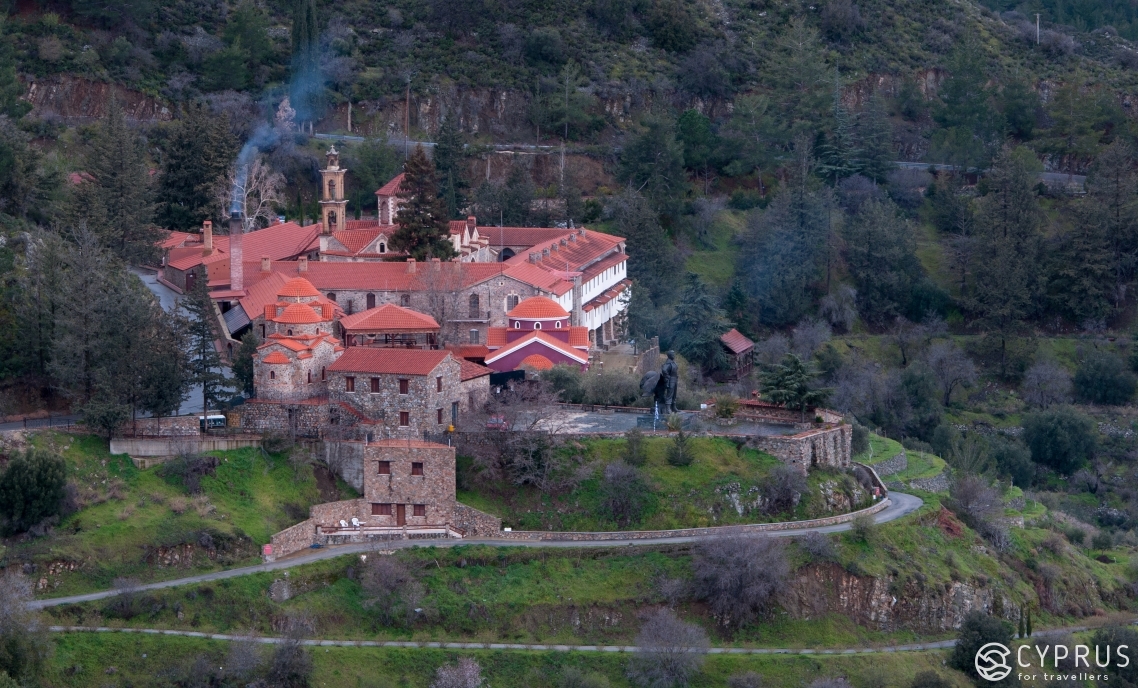
Three nave basilica is located in the middle of the monastery complex. Inside, visitors can see old wall-paintings and the main relic — the icon of the Virgin Mary that had been discovered by Neophytos and Ignatius in the 12th century. Cells and other building around the church have Byzantine architectural features. Monk inhabiting the monastery live off of agricultural labor.
There is a museum next to the monastery, that is dedicated to Grigoris Pieris Afxentiou, a national hero who was hiding in one of the caves near the monastery during the war for the independence from Britain. He was killed.
Agios Georgios Alamanou Monastery
Agios Georgios Alamanou Monastery is a nunnery not far from Limassol. Originally a friary, it was founded by German hermits from Palestine in the 7th century. The monastery got its name from one of the monks: Alamanou is translated from Greek is «German».
During the Middle Ages, the monastery was deserted, and in the end of the 19th century, new cells and a church were built here. In 1949, nuns from the Saint Anthony's Monastery moved in. Eventually, nuns expanded the monastery and built a new church and a cathedral.
Today, nuns live off of gardening, beekeeping, needlework, and icon painting. Visitors can buy honey and other monastery production in a small gift shop. There is also a sacred spring on the territory. A road to a very clean and secluded beach — one of the most scenic places around here — goes through a monastery.
Trooditissa Monastery
Trooditissa Monastery is yet another friary in Troodos, located not far from Platres village. According to a legend, in 1250 two hermits had a vision of the Holy Mother who pointed to a place where they should have built the monastery. They obeyed, and the following year the mountain monastery was founded.
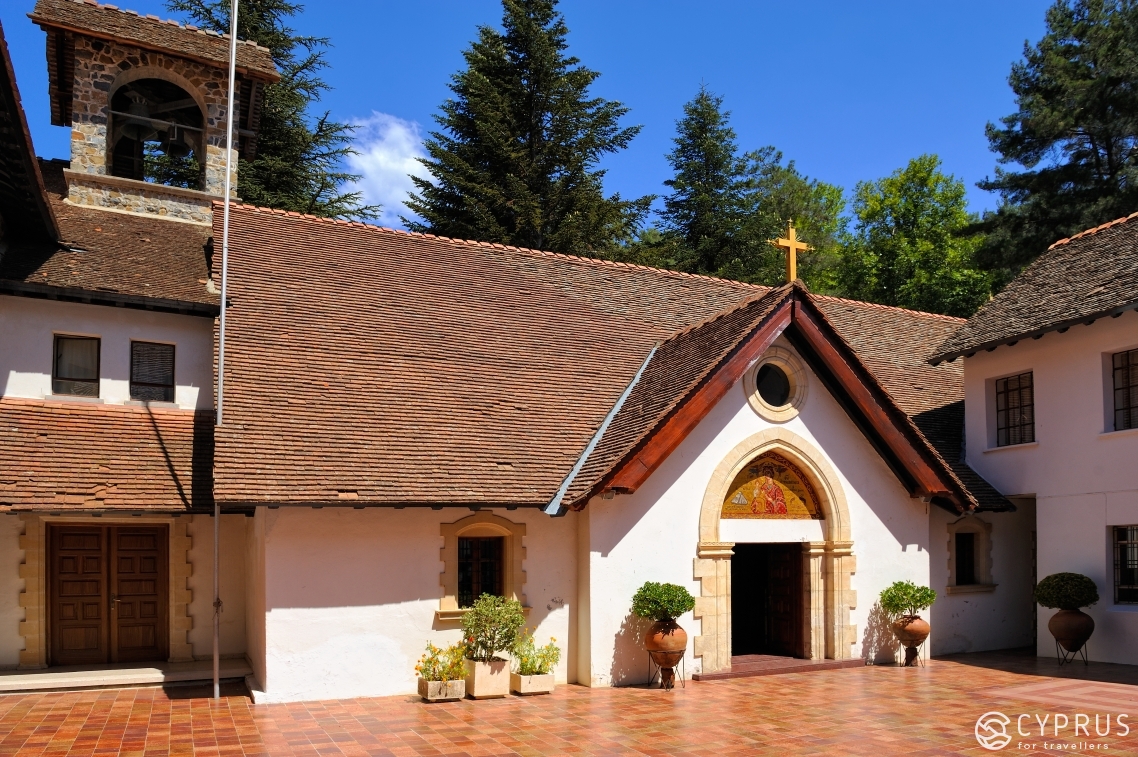
The modern monastery complex dates back to the end of the 19th century. Its main relic pilgrims are coming here to look at is the thaumaturgic icon of Virgin Mary which is believed to help return fertility to women wishing to have a child.
A small monastery publishing house issues books about modern Orthodox Christianity which are sold in a small shop on the territory of the monastery complex.
Officially, the monastery is closed for tourists and aссepts only pilgrims.
St. Nicholas of the Cats Monastery
One of the Cyprus monasteries is especially admired by cats. It is called St. Nicholas Monastery and can be found just in 10 kilometers from Limassol. Cats were brought to the premises at the order of Saint Helena who founded the monastery in 327. Cats were to save the area from poisonous snakes — since then, they have been enjoying love and affection of Cypriots everywhere, but they still seem to like it most at the St. Nicholas Monastery.
The monastery was renovated in 1983 after a long period of abandonment that followed the Middle Ages.
Today, more than 100 cats live in the monastery with just several nuns. There is a cat-friendly tradition to donate all the fish caught on Saint Nicholas' Day to the cats.
Nuns live off of gardening, and the monastery yard is full of amazing flowers. One can also buy local olive oil and hand-made souvenirs in a monastery gift shop.
Timios Stavros Monastery (Omodos village)
Timios Stavros Monastery in Omodos mountain village in Troodos is a cultural and historical site. The main cathedral, that was built in 210 and renovated later, functions as a local parish church. It is believed that Saint Helena contributed several relics to the monastery in the ancient times. A piece of the Holy Cross, the relics of Saint Nicholas and Philip the Apostle are among them.
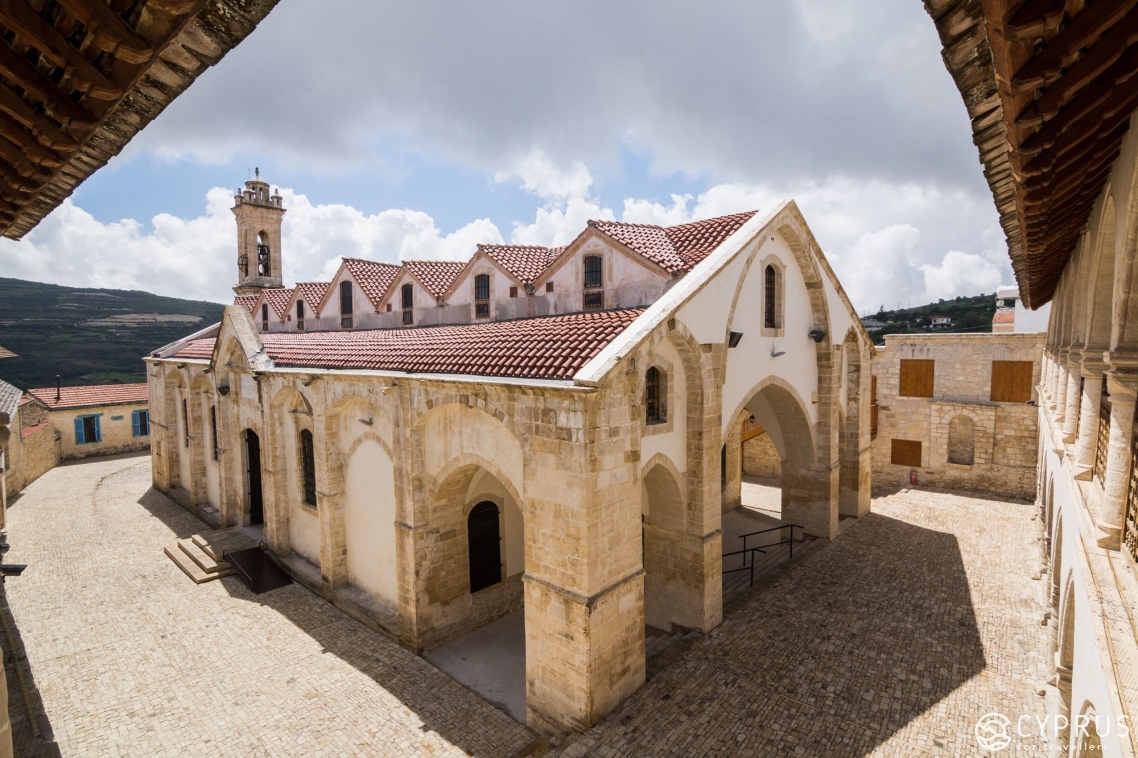
In the 16th century, the monastery was robbed by the Ottomans. It was reconstructed in the beginning of the 19th century. Artists from the Russian Empire participated in creating the wall-paintings for the 18th-century cathedral.
Even though the monastery is currently inactive, all the remaining buildings are well preserved and pilgrims keep coming here to admire the relics.
Trikukkia Monastery
Trikukkia Monastery is known all around Cyprus for its hospitality. Located in Prodromos mountain village, it has been renovated several times since it was first built in the 12th century.
Two main monastery relics are the thaumaturgic icon of the Virgin Mary which is believed to protect those who pray from natural disasters and the icon of Saint Seraphim of Sarov.
Nuns always treat pilgrims with tea and bread with jam, that they produce here themselves from local products.
Monastery of Saint Herakleidios
Monastery of Saint Herakleidios is a nunnery in 20 kilometers from Nicosia, close to the village of Politiko. The coffin of saint martyr Herakleidios and his icon, which is considered to be thaumaturgic, are kept on the territory of the monastery, along with a fragment of the relics of Apostle Barnabas.
The monastery had been turned into a nunnery in the beginning of the 12th century. In the years to follow, it had been destroyed by a series of natural disasters, but its unique icons miraculously remained untouched. Since the middle of the 19th century until the middle of the 20th century the monastery had been functioning as a local church, but in 1962 archbishop Makarios III decided that the monastery needs to be renovated. This is when a new cathedral dedicated to John the Baptist appeared on the premises. There is also a cemetery, a bell tower, and a quiet garden on the territory of the monastery.
Nuns spend a lot of time working in an icon-painting studio, embroidering, beekeeping, and cooking Eastern-style sweets that visitors can try and buy in the monastery.
The Ayia Napa monastery
The Ayia Napa monastery was completely reconstructed in the 14th century. Its history and location (in just one kilometer from the shore, in the heart of a popular Cyprus resort) attract not only pilgrims but also numerous tourists.
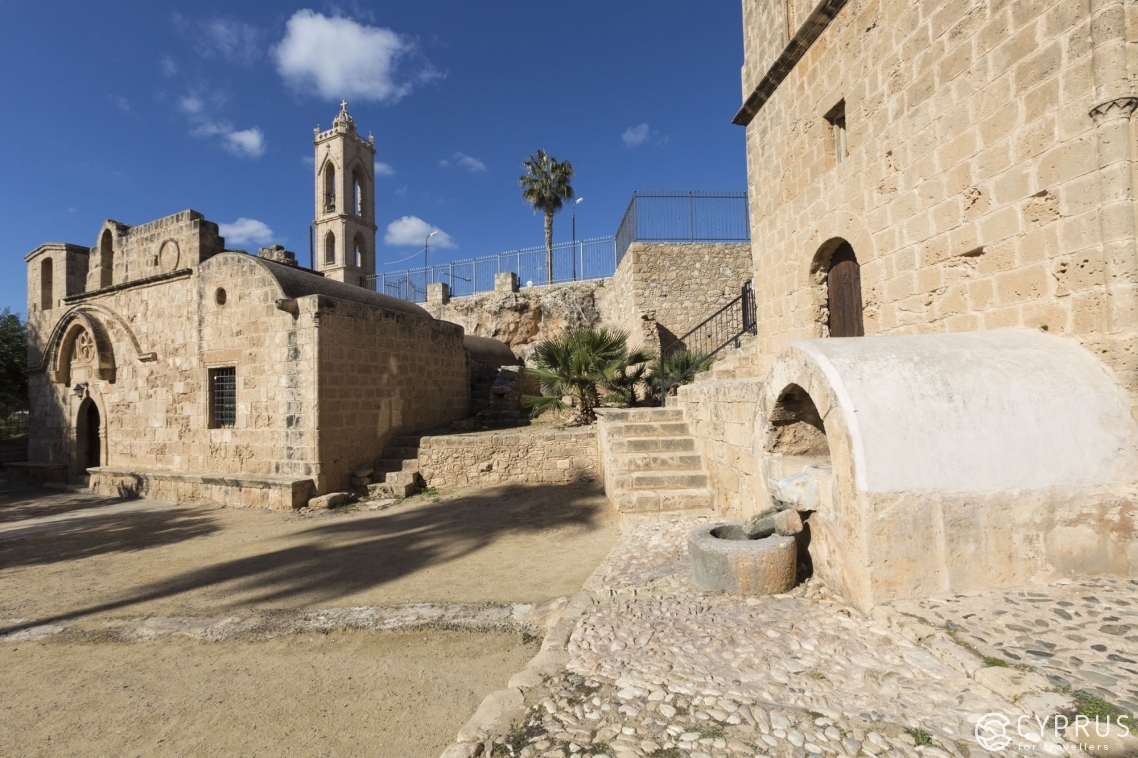
The architecture of the monastery is not quite common for Cyprus — it is built in the style of Italian Renaissance. Its name is translated from Greek as «a saint forest» and originates from the name of the icon that was found in this area.
Today the monastery functions as a museum, while confession and communion services are received in a nearby cathedral. In a monastery bell tower, one can study the old icons and place a candle.
Church gatherings, conferences, and festivals are regularly held on the territory of the former monastery. Admission is free.
Saint Minas Monastery
Saint Minas Monastery was built not far from Vavla village during the rule of the Lusignans (the 15th century). Originally it was a friary with workshops and a creamery on the premises.
In the 18th century, the monastery was abandoned. It remained desolated up until the middle of the 20th century when nuns moved in.
The main relic of the monastery can be found on the right side of the iconostasis: it is the icon of the Saint Minas created by the famous iconographer Philaret.
Pilgrims come to the monastery to ask for material benefits and those who actually managed to become rich return here to leave golden chain-works and other jewelry next to the icon. Apart from that, the icon is believed to be healing.
Monastery-made honey, jam, and sweets can be bought in a small shop located on the territory of the nunnery.
Saint Thekla Monastery
Saint Thekla Monastery, just like some other famous Cyprus monasteries, was founded by Saint Helena in the 4th century.
The basilica and the cells were built at the end of the 18th century. During the times of the Ottoman occupation, the monastery was abandoned; in the second half of the 19th century, it was turned into a local school.
Finally, in the second half of the 20th century, the monastery became a nunnery. There is a holy water stream by the entrance, and a source of curative clay: photographs of the healed children can be found in the hallway.
The monastery is open for visitors every day; admission is free.
Agios Ioannis Lambadistis Monastery
Agios Ioannis Lambadistis Monastery was built in the 11th century. It can be found in Kalopanayiotis village in central Troodos. After the foundation, the monastery was dedicated to Saint Herakleidios, but eventually it was renamed after Ioannis, the saint who was poisoned by his bride’s parents — they could not forgive his intention to become a monk instead of a married man. Blinded, Ioannis spent his last years in the monastery and died at the age of 22. After his death, Ioannis became known as a thaumaturge.
Today there are three churches on the territory of the monastery: they are connected by an arch walkway. The first was built the same year as the monastery, the second is dedicated to Saint Ioannis (his holy relics are kept there), and the third, the Latin chapel of the 15th century, features frescoes in Italo-Byzantine style.
The Byzantine Icons Museum is open today in one of the monastery buildings. The architectural complex of the monastery is included in the UNESCO world heritage list.
Panagia tou Sinti Monastery
Panagia tou Sinti Monastery built in the 13th century is located on the west bank of Xeros river, close to where it meets with Sinti river. Up until the end of the 16th century, the monks who lived in the monastery produced olive oil and practiced agriculture.
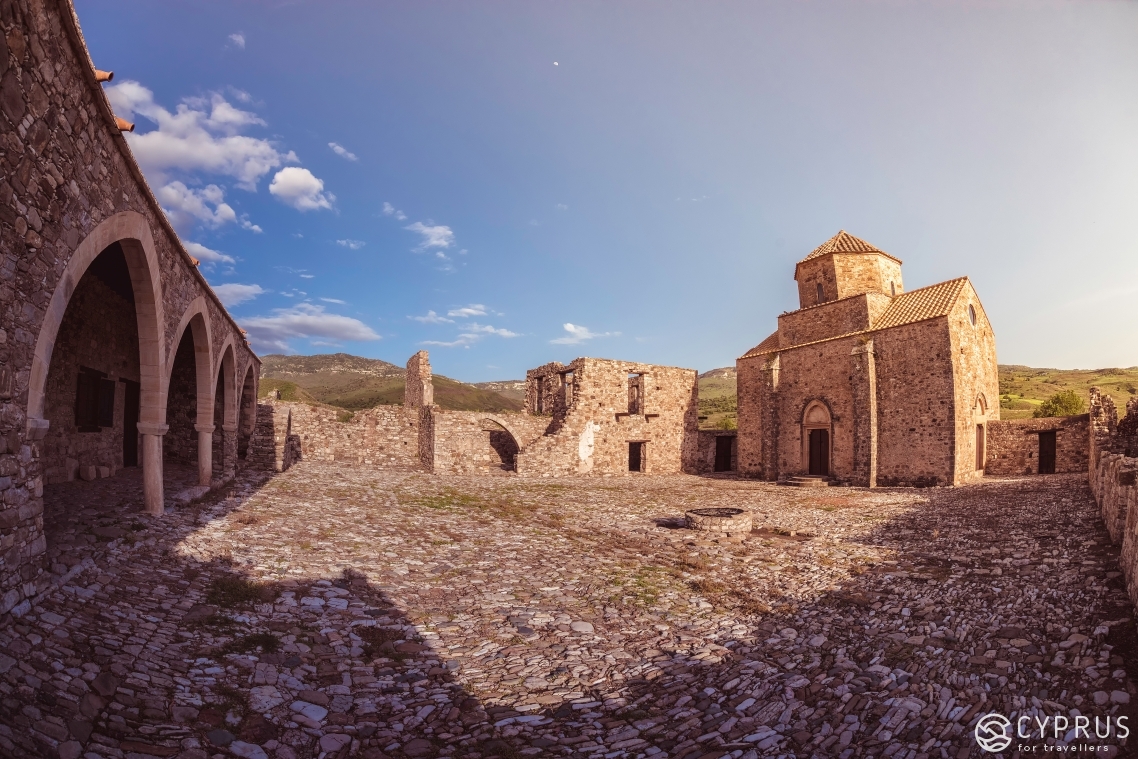
During the times of the Venetian rule, the monastery was renovated with a dramatic change of its architectural features. The Ottomans wanted to turn it into a mosque but this plan did not come to life. For a short period of time after the monastery had been returned to Christians, it was quite prosperous, but in autumn of 1996, when it was announced a historical site, it was found ruined and desolated.
Today the monastery church is fully renovated; from time to time, it hosts religious service such as christianising.

